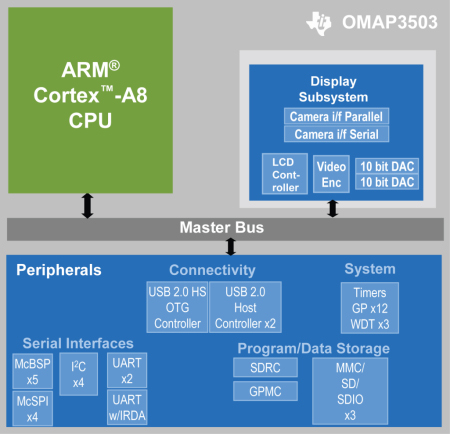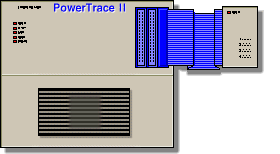Hardware-assisted debugger supports Linux, Cortex-A8-based SoC
Mar 28, 2008 — by Eric Brown — from the LinuxDevices Archive — 34 views Germany-based Lauterbach announced that its hardware-assisted debugger now supports TI's new OMAP35XX family of DaVinci processors. Trace32 PowerTools support Linux both as a target OS and development host, and can be used to debug high-level languages (HLLs) and assembler, program flash, and do real-time… traces.
Germany-based Lauterbach announced that its hardware-assisted debugger now supports TI's new OMAP35XX family of DaVinci processors. Trace32 PowerTools support Linux both as a target OS and development host, and can be used to debug high-level languages (HLLs) and assembler, program flash, and do real-time… traces.
(Click for larger view of PowerTrace tool)
The Trace32 PowerTools package includes a hardware-assisted C and C++ debugger, assembler debugger, program flow trace tool, a Flash memory programming tool, and other utilities and widgets, such as a statistical memory usage analyzer. Multi-core support is another touted feature. Supporting Linux, Windows, or Solaris, the tools offer “extensive support” for Linux, Windows CE, and Symbian OS targets, Lauterbach says.

Trace32 software screen
(Click to enlarge)
The Trace32 PowerTools are designed for use with Lauterbach's various hardware probes, debuggers, and emulators. The company offers in-circuit debuggers (ICDs), in-circuit emulators (ICEs), and RISC emulators, and claims its debugging tools to be the fastest available for 32-bit RISC controllers. Specific hardware components compatible with the Trace32 PowerTools include:
- High-Speed JTAG/BDM Debugger — Available in USB, USB/Ethernet, and USB/gigabit Ethernet versions.
- PowerTrace State Analyzer — USB/Ethernet and USB/gigabit Ethernet versions, with 256MB or 512MB trace memory, 300MHz effective sample rate with self calibration, upload of full trace within 10 seconds, and hardware breakpoints and trigger.
- Nexus Debugger — USB/Ethernet and USB/gigabit Ethernet versions offering Nexus standard class 1 to 3+ support.
- PowerProbe Logic and Protocol Analyzer — Timing analyzer up to 400MHz and state analyzer up to 100MHz, with 64 input channels, transient recording, and time correlation with RISC trace. Also offers mixed state and timing mode.
- PowerIntegrator Logic Analyzer — The PowerIntegrator provides a timing analyzer up to 400MHz and state analyzer up to 200MHz, with 204 input channels, transient recording, and time correlation with RISC trace. It also offers mixed state and timing mode.
OMAP35xx
TI's new OMAP35XX, announced last month, is a Linux-compatible, ARM Cortex-A8-based applications processor. TI plans to release four versions of the 600MHz 35xx processors this year: the bare bones 3503 (sampling now); the Open-GL graphics-enabled 3515; the 3525, which includes the DaVinci TMS320C64x+ DSP and an integrated video accelerator; and the high-end 3530, which offers all of the above. The Trace32 PowerTools also support debugging on the C64xx, says Lauterbach.

TI's OMAP35xx architecture
(Click to enlarge)
When used with the OMAP35xx, Lauterbach's PowerTrace State Analyzer lets developers use the CoreSight ETM (embedded trace macrocells) on-chip interface to record the program flow of the Cortex-A8 in real time in an up to 4GB trace buffer, says Lauterbach. Together with the debugger, the analyzer can also trace information from the SDTI (serial data transport interface), correlated with the ETM trace. The CTS system is said to allow the reconstruction of all registers, memories, caches, and TLBs (translation lookaside buffers) from the trace buffer for “stepping back in time” to gain detailed cache and core utilization data.

PowerTrace II
Lauterbach will be giving a workshop at the Embedded Masterclass 2008 on how to use Trace32 PowerTools to apply a mixture of run-mode and stop-mode techniques on ARM and PowerPC cores. Combining the techniques, says the company, can help developers find even the most obscure, hard to find bugs that are missed by using either one of the modes on their own.
Availability
The Trace32 PowerTools are available for the OMAP35xx and many other ARM and PowerPC processors, at an undisclosed price.
This article was originally published on LinuxDevices.com and has been donated to the open source community by QuinStreet Inc. Please visit LinuxToday.com for up-to-date news and articles about Linux and open source.